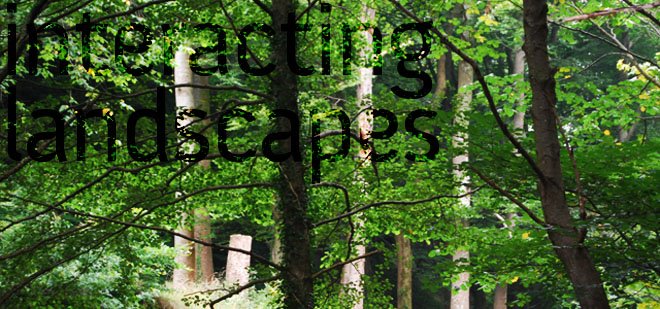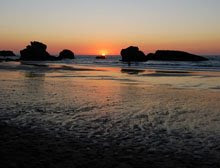

In these comparing diagrams you get a good understanding of the land use of the 3 sites and especially the relationship between the water and the open space. The filter beds are especially relevant to look at in comparison to Tannery Basin - the both have a natural river and a canal adjacent.  The filter beds are made up of semi natural habitats where the filter beds previously used to provide the surrounding areas with purified water. The beds were active for 100 years before they were shut in 1969. Since then nature and wildlife has colonised the space. It is part of a network of spaces in the Lee Valley.
The filter beds are made up of semi natural habitats where the filter beds previously used to provide the surrounding areas with purified water. The beds were active for 100 years before they were shut in 1969. Since then nature and wildlife has colonised the space. It is part of a network of spaces in the Lee Valley.  Walking down from Lee Bridge Road you can spot the north end of the site. Nature is contained in the former beds and along the edges of the space. You are very much a spectator in this space, taking in the nature, history and sounds from the reed beds. The space is managed to stay wild and management is not obvious, even a regular management and volunteer programme exists.
Walking down from Lee Bridge Road you can spot the north end of the site. Nature is contained in the former beds and along the edges of the space. You are very much a spectator in this space, taking in the nature, history and sounds from the reed beds. The space is managed to stay wild and management is not obvious, even a regular management and volunteer programme exists.
 Nature was very beautiful when I visited in early April. Even though it wasn't very green, the reeds created a very special feeling in the space. The image on the right show the difference to the space in the summer. The seasonal changes not only changes the site, but also the relationship with the surroundings. This is also the case at Tannery Basin.
Nature was very beautiful when I visited in early April. Even though it wasn't very green, the reeds created a very special feeling in the space. The image on the right show the difference to the space in the summer. The seasonal changes not only changes the site, but also the relationship with the surroundings. This is also the case at Tannery Basin.
 Camley Street is a community project which involves nature conservation (this is how reserve is described in the management report). The space has a range of habitats including secondary woodland, wetland, marsh and grassland. It is run mainly by volunteers. There is also a strong events programme, which includes education sessions. The challenge at Camley Street is to encourage a greater diversity if volunteers and visitors.
Camley Street is a community project which involves nature conservation (this is how reserve is described in the management report). The space has a range of habitats including secondary woodland, wetland, marsh and grassland. It is run mainly by volunteers. There is also a strong events programme, which includes education sessions. The challenge at Camley Street is to encourage a greater diversity if volunteers and visitors.

 The filter beds are made up of semi natural habitats where the filter beds previously used to provide the surrounding areas with purified water. The beds were active for 100 years before they were shut in 1969. Since then nature and wildlife has colonised the space. It is part of a network of spaces in the Lee Valley.
The filter beds are made up of semi natural habitats where the filter beds previously used to provide the surrounding areas with purified water. The beds were active for 100 years before they were shut in 1969. Since then nature and wildlife has colonised the space. It is part of a network of spaces in the Lee Valley.  Walking down from Lee Bridge Road you can spot the north end of the site. Nature is contained in the former beds and along the edges of the space. You are very much a spectator in this space, taking in the nature, history and sounds from the reed beds. The space is managed to stay wild and management is not obvious, even a regular management and volunteer programme exists.
Walking down from Lee Bridge Road you can spot the north end of the site. Nature is contained in the former beds and along the edges of the space. You are very much a spectator in this space, taking in the nature, history and sounds from the reed beds. The space is managed to stay wild and management is not obvious, even a regular management and volunteer programme exists.  Nature was very beautiful when I visited in early April. Even though it wasn't very green, the reeds created a very special feeling in the space. The image on the right show the difference to the space in the summer. The seasonal changes not only changes the site, but also the relationship with the surroundings. This is also the case at Tannery Basin.
Nature was very beautiful when I visited in early April. Even though it wasn't very green, the reeds created a very special feeling in the space. The image on the right show the difference to the space in the summer. The seasonal changes not only changes the site, but also the relationship with the surroundings. This is also the case at Tannery Basin.  Camley Street is a community project which involves nature conservation (this is how reserve is described in the management report). The space has a range of habitats including secondary woodland, wetland, marsh and grassland. It is run mainly by volunteers. There is also a strong events programme, which includes education sessions. The challenge at Camley Street is to encourage a greater diversity if volunteers and visitors.
Camley Street is a community project which involves nature conservation (this is how reserve is described in the management report). The space has a range of habitats including secondary woodland, wetland, marsh and grassland. It is run mainly by volunteers. There is also a strong events programme, which includes education sessions. The challenge at Camley Street is to encourage a greater diversity if volunteers and visitors. 
The space encourages learning and this is evident in the details across the site - with lots of habitat creations. All cut wood on site is re used on site. In edging, on paths or left to create habitats. It shows a range of easy measurements to habitat creation and doesn't undermine the beauty of the space. I really like the tree trunk edging and to see how different natural materials is used across the space.
In conclusion both these sites show the importance of management - but in different ways. There is a strong relationship with the adjacent water which is reflected in the habitats and use of space. Seasonal changes alters the legibility and relationship with the surroundings. One site encourages you take part and the other one to be a spectator - both very successful and well used spaces.


















No comments:
Post a Comment